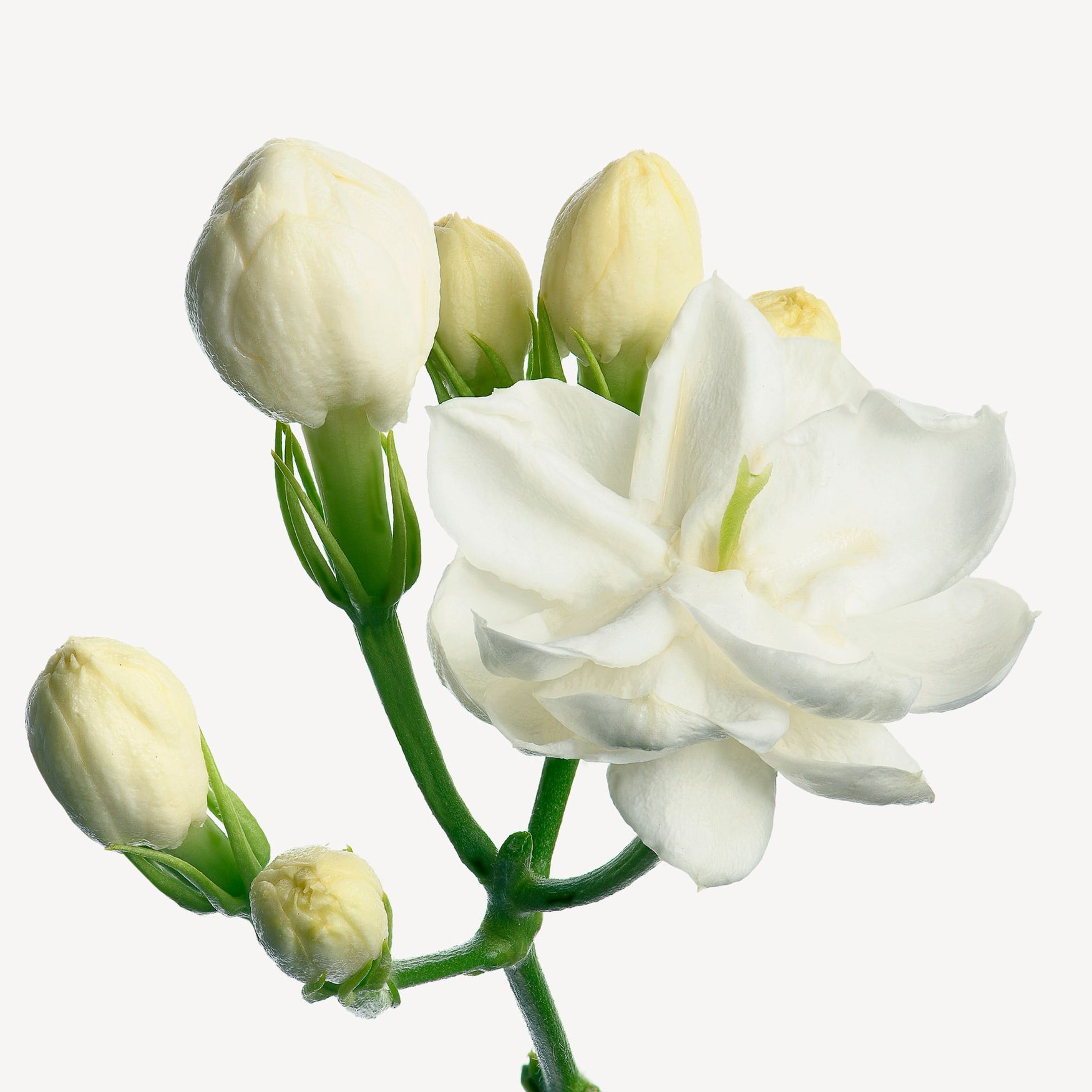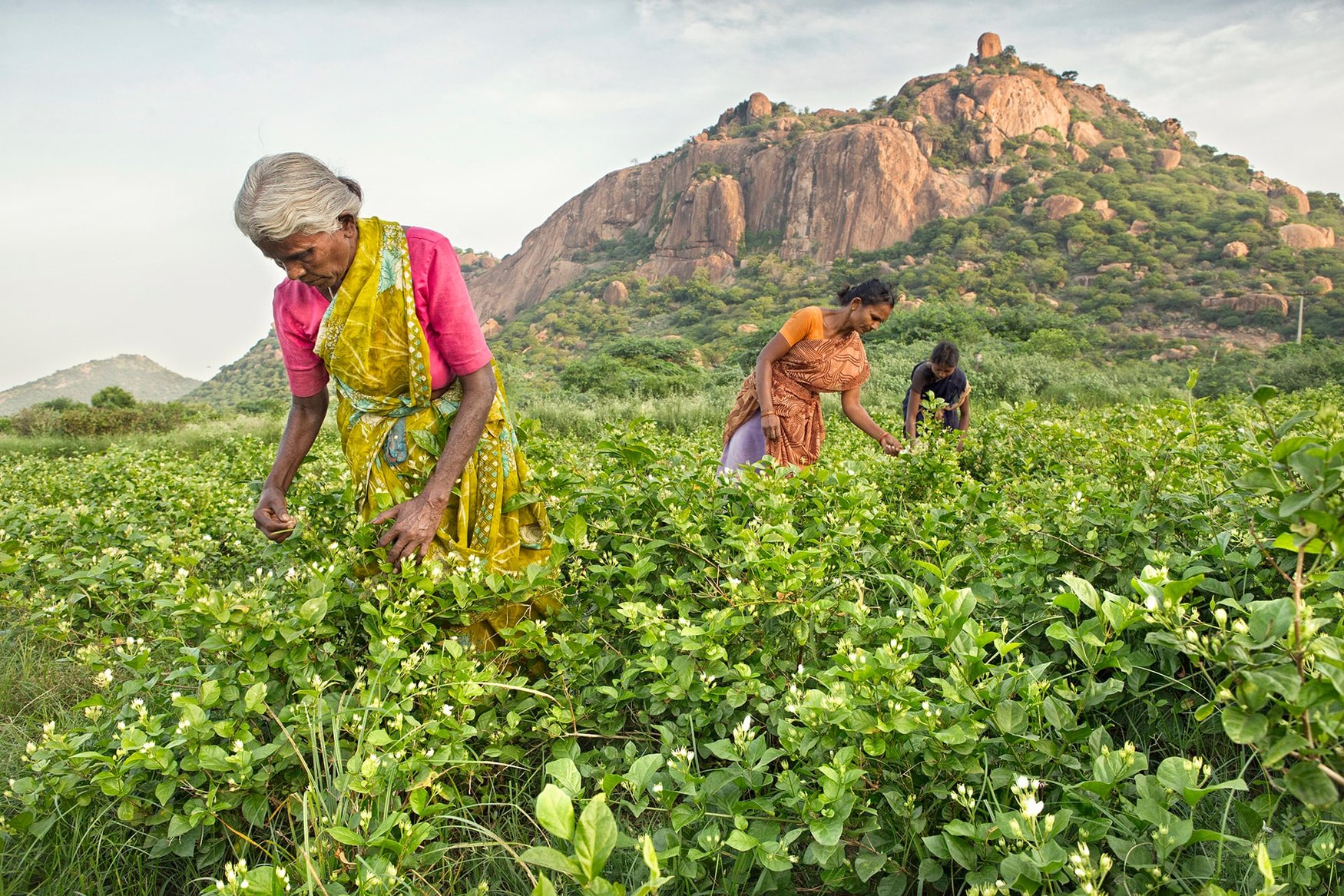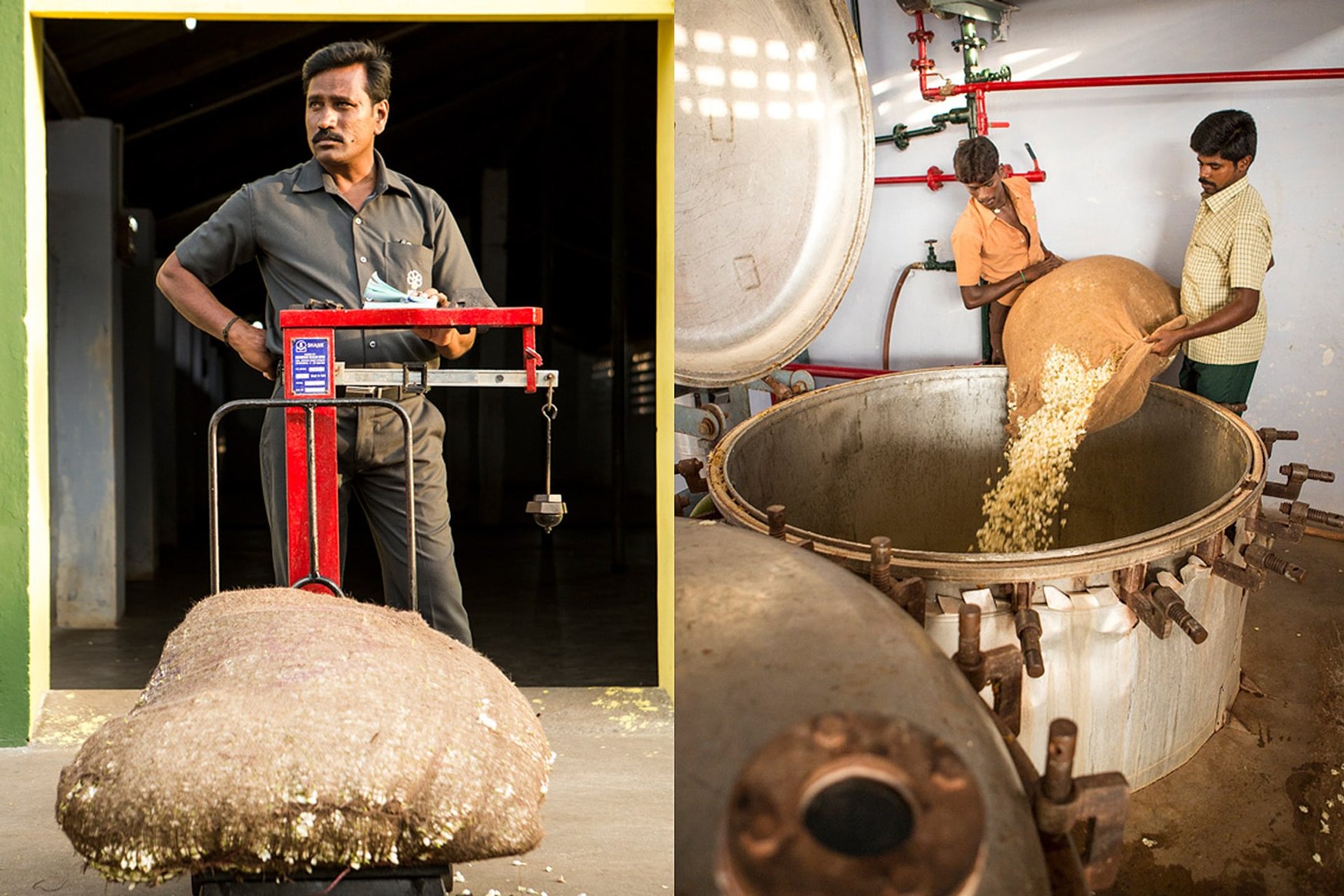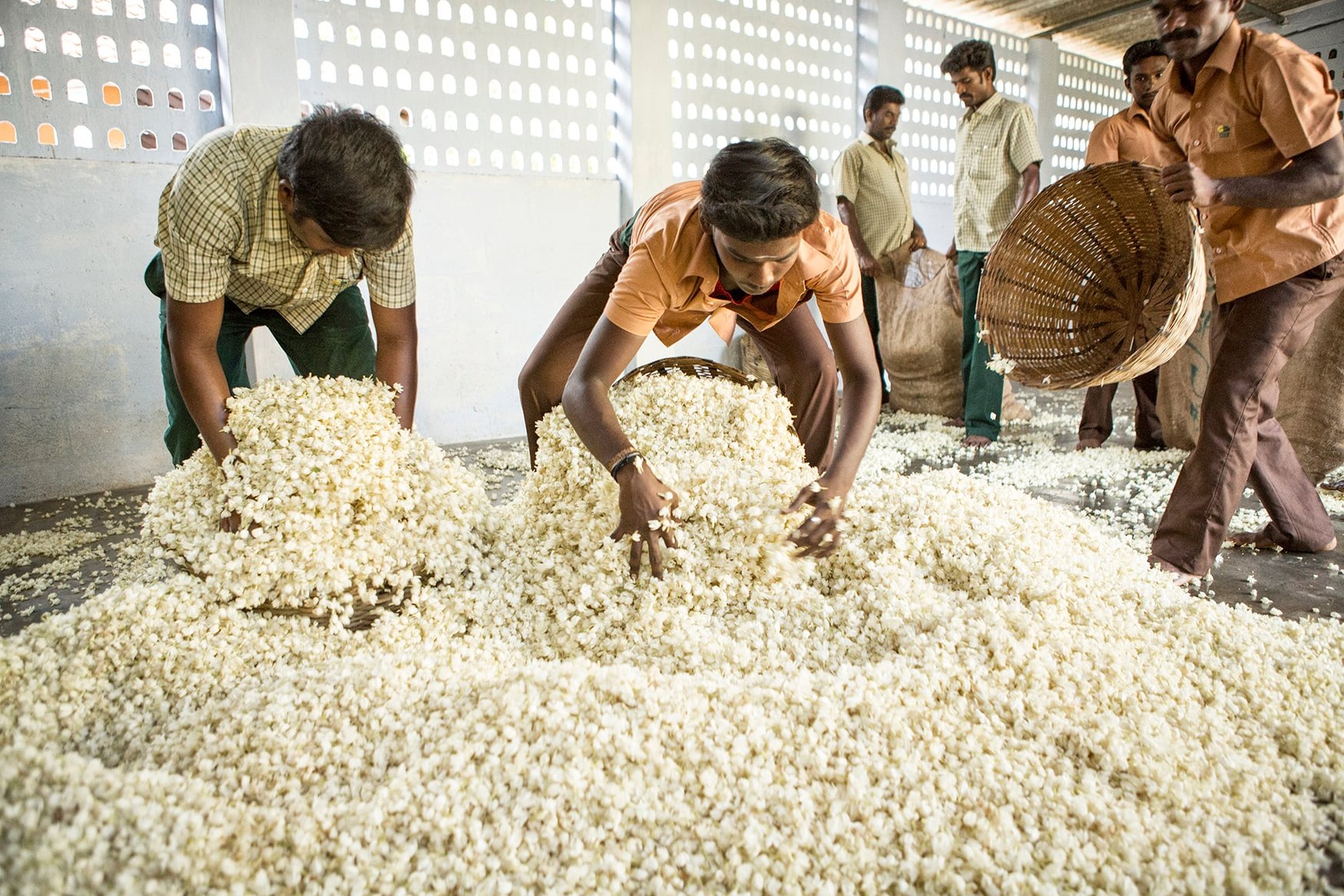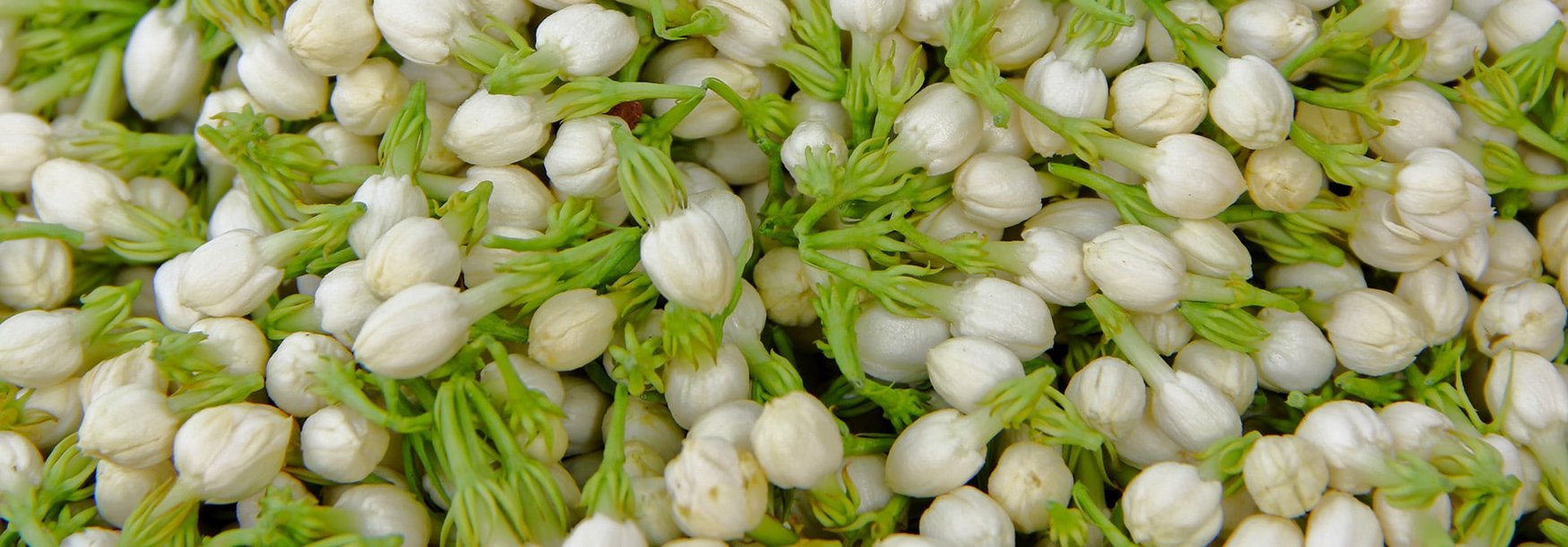Jasmine (Sambac)
Floral, fruity, powerful, greener and less animalic than grandiflorum jasmine.
Jasmine sambac blossoms in the heart of fragrances, delicately unravelling in floral shades of green. Orange blossom smooths the note with round, solar-like nuances while fruity facets add an intriguing sweetness. It's a powerful note that’s greener and less animalic than grandiflorum jasmine.
Data sheet
- Type
- Extraction Method
- Used parts
- Natural Raw Material
- Solvent extraction
- Flowers
